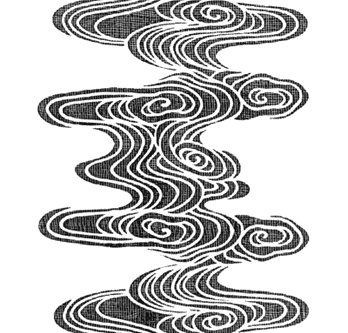|
||
 |
||

(C)2001 Japanese Architecture and Art Net Users System. No reproduction or republication without written permission.
掲載のテキスト・写真・イラストなど、全てのコンテンツの無断複製・転載を禁じます。
|
||||||
| ryuusuimon 流水文 | ||||||
| KEY WORD : art history / paintings | ||||||
| A design pattern which represents flowing water. One of the oldest designs in Japan, it appears as parallel 'S' lines incised on early Yayoi period earthenware, but it is uncertain whether this design was intended to depict running water. Later in the period, however, bronze bells doutaku 銅鐸 were manufactured with geometric designs judged by some experts to be early ryuusuimon. The design appears on the miniature Buddhist shrine of Lady Tachibana Tachibana Fujin no Zushi 橘夫人の厨子 in Houryuuji 法隆寺 (late 7c), but rarely appears on textiles during this period. From the middle ages it was used on picture scrolls *emaki 絵巻 and clothing such as *nou 能 garments, but was not combined with other motifs until the 16-17c. In the Edo period it often appeared on *kosode 小袖 in conjunction with landscapes, bridges, ships and bird-and-flower motifs kachoumon 花鳥文. Later these were expanded and elaborated upon to include scenes from stories, poems or famous beauty spots. The design was also used in other applied arts, especially lacquer and ceramic work. A particularly well-known type of ryuusuimon is the kanzemizumon 観世水文 (a design of gentle oblong whirlpools). Another, the tatsutagawamon 竜田川文 (combines water with floating autumn maple leaves). | ||||||
 |
||||||
| REFERENCES: | ||||||
| EXTERNAL LINKS: | ||||||
| NOTES: | ||||||
(C)2001 Japanese Architecture and Art Net Users System. No reproduction or republication without written permission. 掲載のテキスト・写真・イラストなど、全てのコンテンツの無断複製・転載を禁じます。 |
||||||